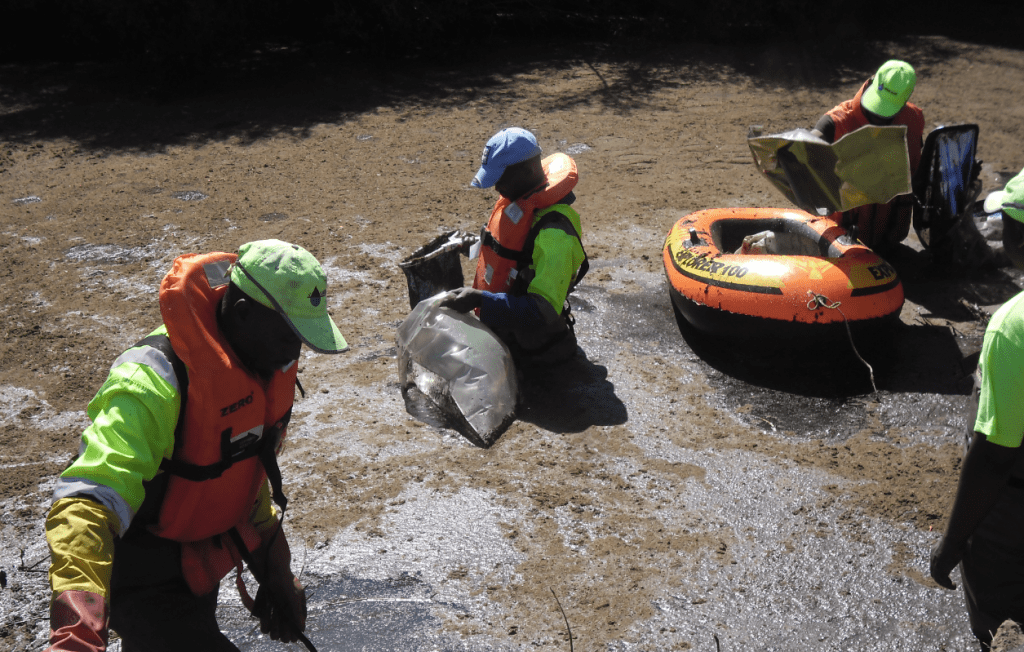ไม่มีสินค้าในตะกร้า
ความรู้เกี่ยวกับเซฟตี้
ขั้นตอนการเก็บกู้สารเคมี ตามที่กฏหมายกำหนด และเป็นไปตามข้อบังคับของ OSHA
ขั้นตอนการเก็บกู้สารเคมี ตามที่กฏหมายกำหนด และเป็นไปตามข้อบังคับของ OSHA
7 Step Spill Procedure
1. ASSESS THE RISK
From the moment a spill occurs and throughout the response, determine risks that may affect human health, the environment and property. ALWAYS put SAFETY FIRST. If possible, identify the spilled material and determine how much was spilled.
2. SELECT PERSONAL PROTECTIVE EQUIPMENT
Choose the appropriate Personal Protective Equipment (PPE) to safely respond to the spill. Consult Material Safety Data Sheets (MSDS) and literature from Chemical and PPE manufacturers for the best recommendations. If you are uncertain of the danger and the spilled material is unknown, assume the worst and use the highest level of protection.
3. CONFINE THE SPILL
SPEED COUNTS! Limit the spill area by blocking, diverting or confining the spill. Use contained absorbents such as socks and booms as found in our spill kits. STOP the flow of the liquid before it has a chance to contaminate a water source. Spill kits are designed to facilitate a quick, effective response.
4. STOP THE SOURCE
After the spill is confined, stop the source of the spill. This may simply involve turning a container upright or plugging a leak from a damaged drum or container. Products like the Repair Putty as well as barrel patches and cone plugs are effective at stopping leaks. Transfer liquids from the damaged container to a new one.
5. EVALUATE THE INCIDENT AND IMPLEMENT CLEAN-UP
Once the spill is confined and the leak has been stopped, it is time to re-assess the incident and develop a plan of action for implementing the spill clean-up. Pillows and mat pads are commonly used to absorb the remainder of the spill. Simply place the pillows and pads throughout the spill area. Unused absorbents are not hazardous. However, once the absorbents are saturated with oils, solvents etc. they may be considered hazardous waste and must be disposed of properly.
6. DECONTAMINATE
Decontaminate the site, personnel and equipment by removing or neutralizing the hazardous materials that have accumulated during the spill. This may involve removing and disposing of contaminated media such as soil that was exposed during the spill incident. An effective decontamination area ensures the health and safety of emergency responders.
7. COMPLETE REQUIRED REPORTS
Complete all notifications and paperwork required by local and governmental guidelines for reporting spill incidents. Failure to do so can result in severe penalties.
วันนี้คุณมีการเตรียมตัวที่ดีแล้วหรือยังค่ะ
ทีมเซฟตี้เซลส์ขายส่งอุปรณ์เซฟตี้ ถูก และดี ครบจบที่เดียว
ประสบการณ์กว่า 20 ปี เรามั่นใจด้วยการบริการลูกค้ากว่า 500,000 ราย
ขอขอบคุณข้อมูลจากเว็ป https://nipponsafety.com/ https://thailandsafety.com/, https://teamsafetysales.com/, https://jorporsafety.com/
Line : @aro1988r
Tel : 02-017-4242
www.supersafetythailand.com
Mail : teamsafetysales@gmail.com

